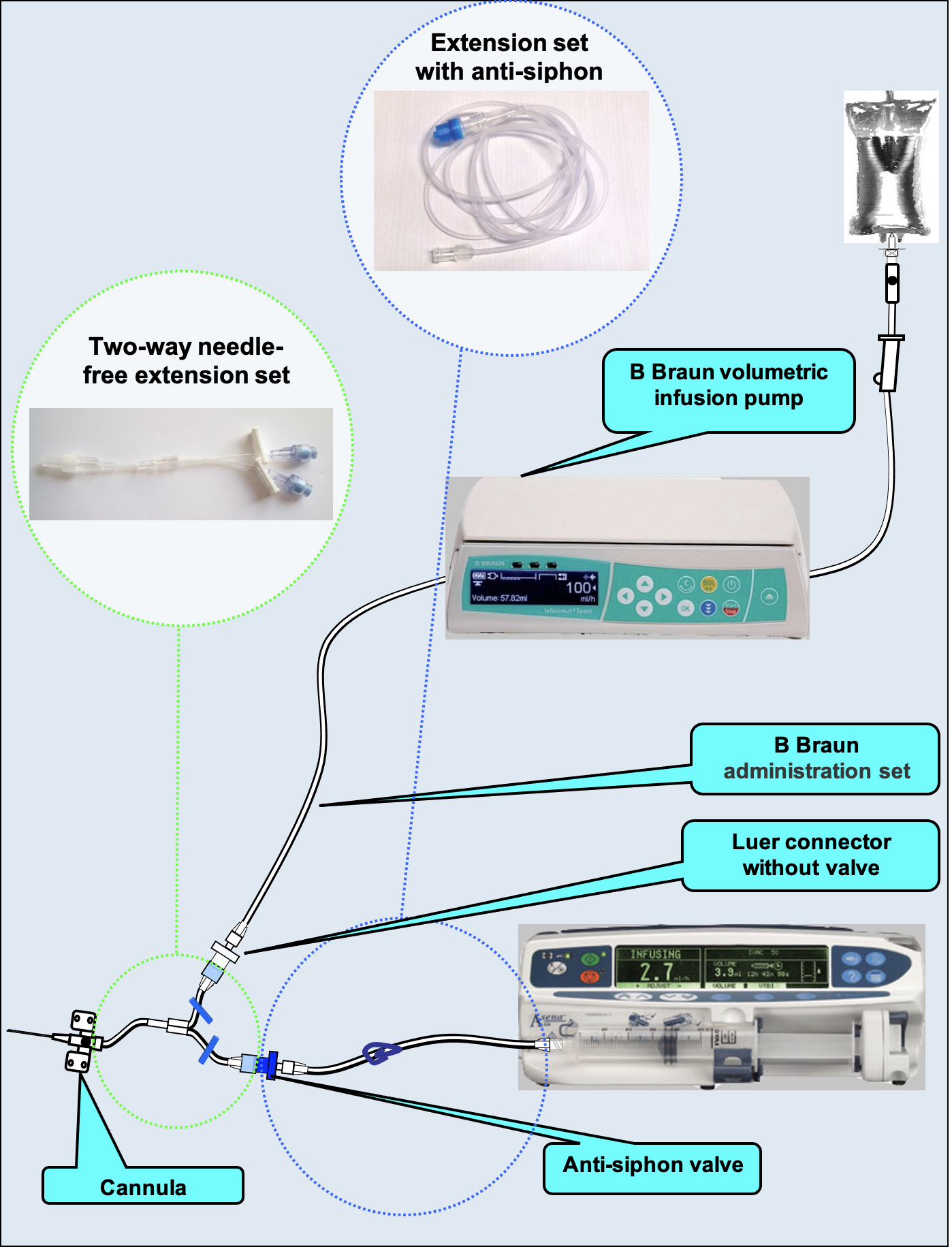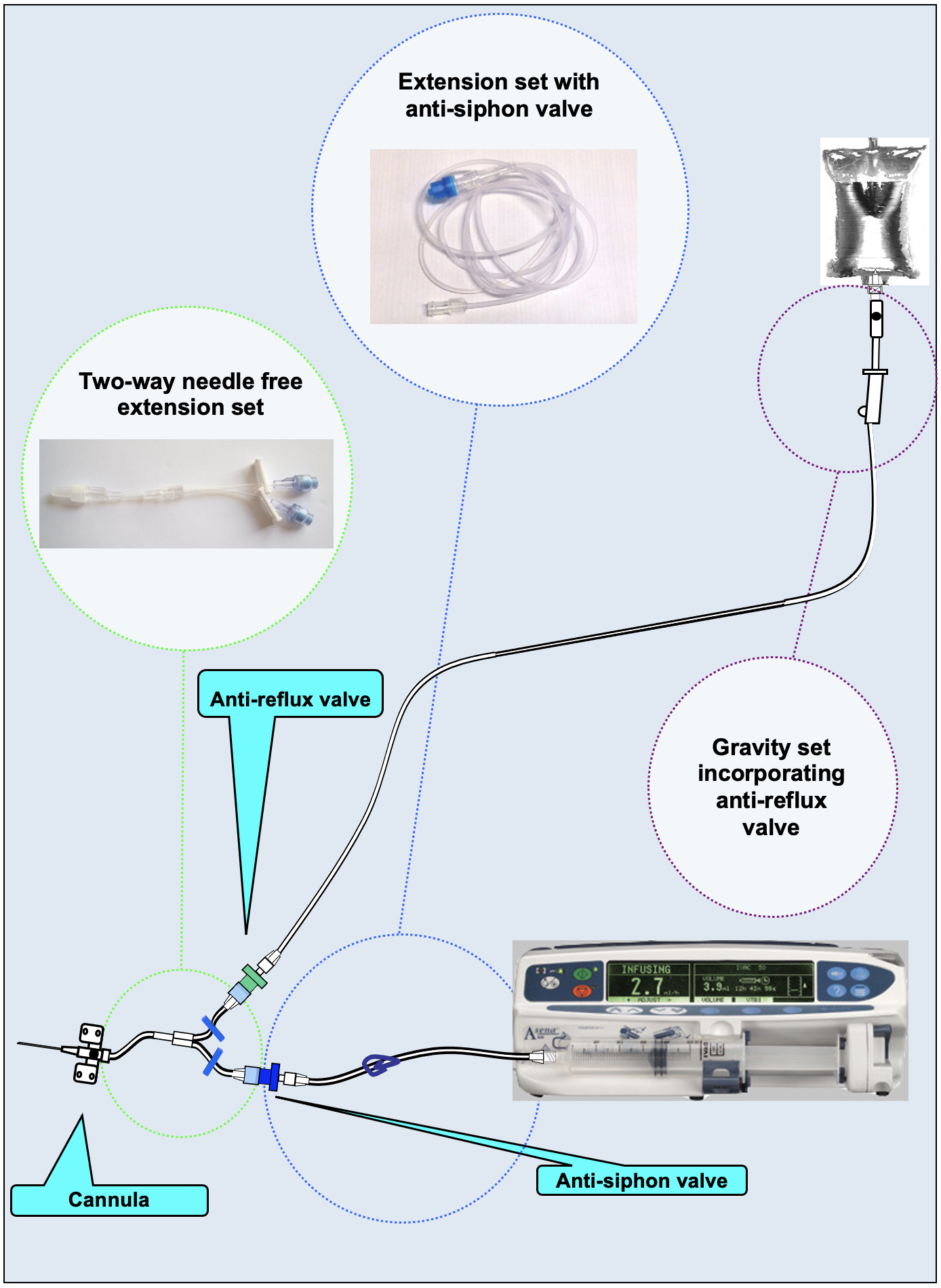- For insulin and fluids, use IV INSULIN & FLUID VIA ONE CANNULA
DEFINITIONS
PROCEDURE
Drug infusion
- Administer by a syringe pump via an infusion set with an anti-siphon valve
- to prevent inadvertent flow to patient from an unclamped or damaged syringe
IV fluids
Ideal-use volumetric pump
- Run IV maintenance fluid via a volumetric pump to a Luer connector without a valve. See figure 1
Gravity set with anti-reflux valve
Check safe to use
- Use only for drug infusions where inadvertent administration of the drug infusion or the fluid infusion at an unintended rate would not be clinically unsafe
- e.g. not for insulin, vasopressors, inotropic agents
- use only if a volumetric pump is not available, or the IV fluid line is removed from the pump
- Fit an anti-reflux valve to prevent reverse flow of drug into bag. See figure 2
- gravity sets incorporating an anti-reflux valve are available
Assembly
- Connect drug infusion syringe to a line with an anti-siphon valve
- run infusion through line
- place syringe into syringe driver
- Connect IV fluid to an administration set running through a volumetric pump to a Luer lock (Figure 1) OR to an administration set to an anti-reflux valve (Figure 2)
- run IV fluid through administration set
- Connect each into one of the double ends of a two-way needle-free extension set
- run IV fluid through extension set
- Connect the single end of the two-way needle-free extension set into the cannula
© 2022 The Bedside Clinical Guidelines Partnership.
Created by University Hospital North Midlands and Keele University School of Computing and Mathematics.
Research and development team: James Mitchell, Ed de Quincey, Charles Pantin, Naveed Mustfa

